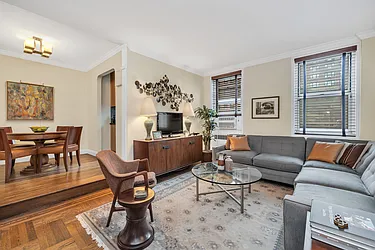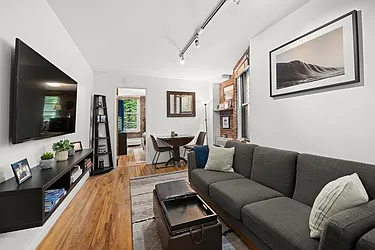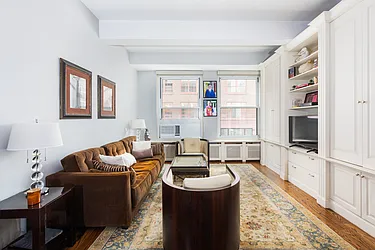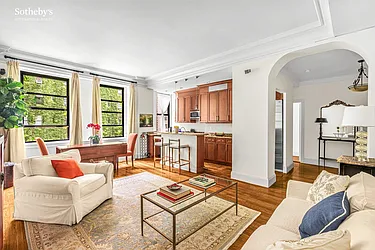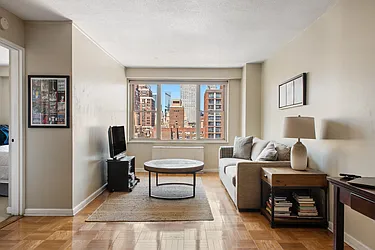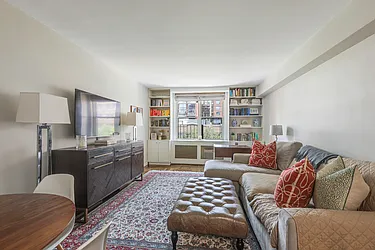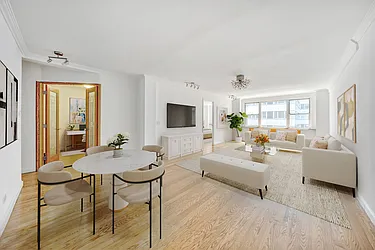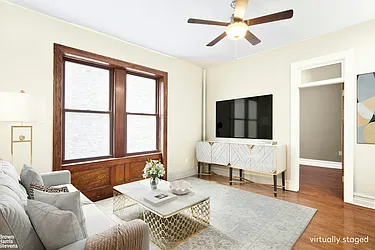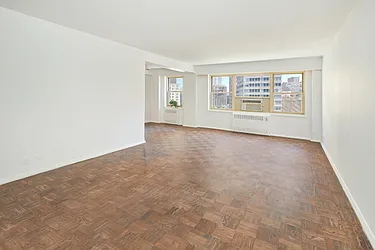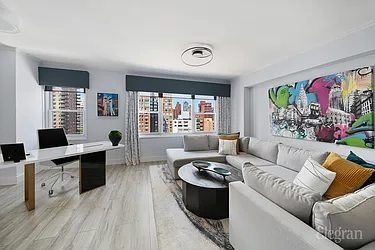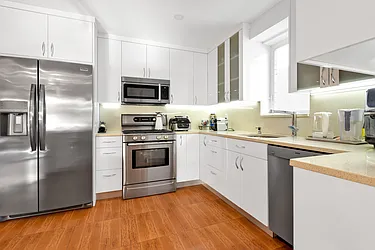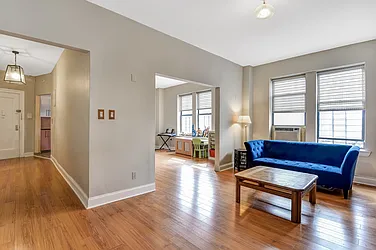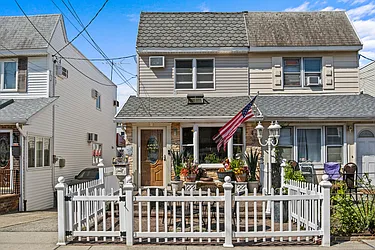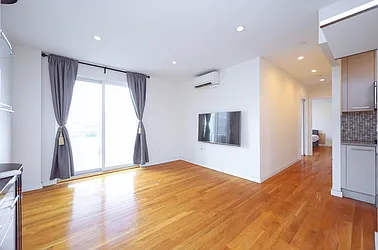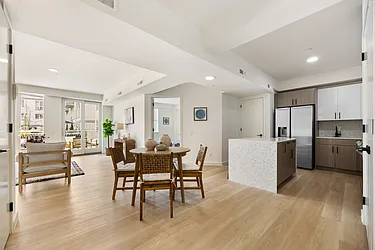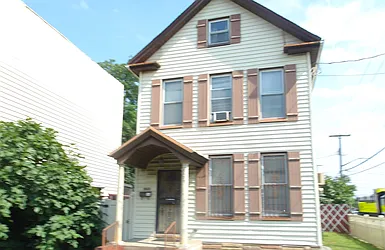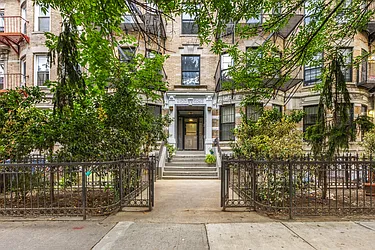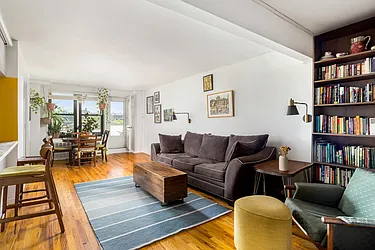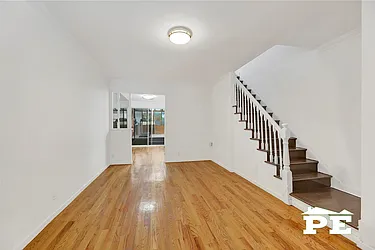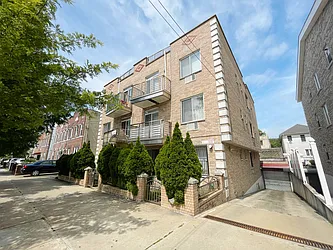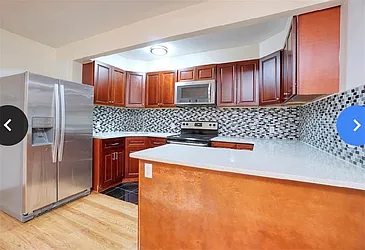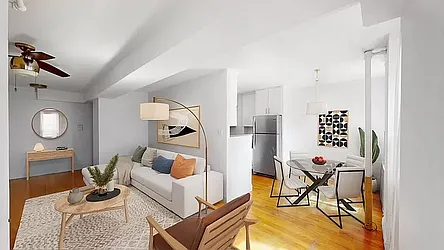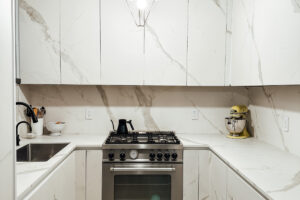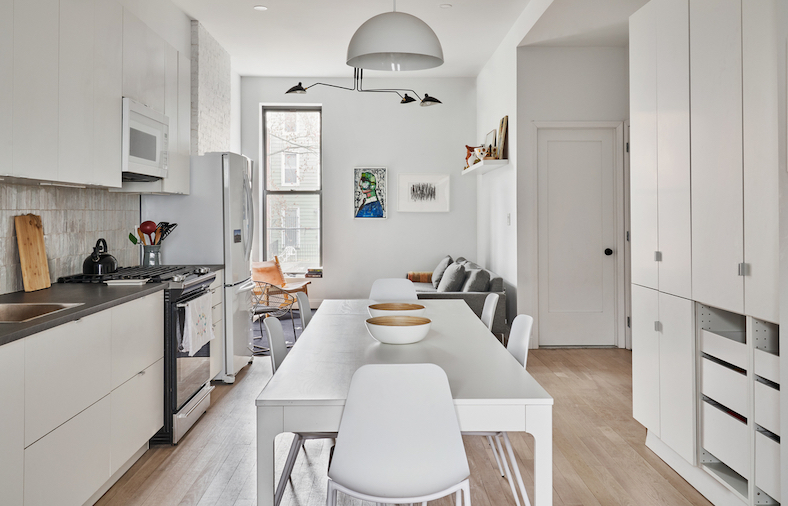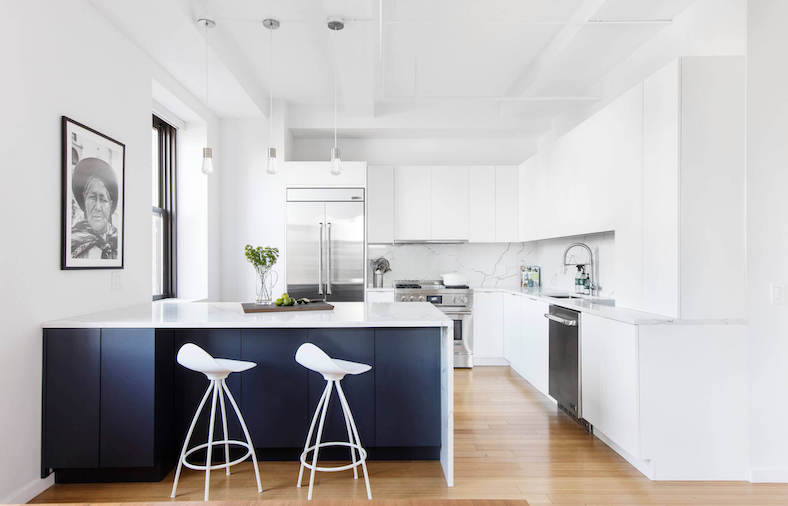Renovating in NYC
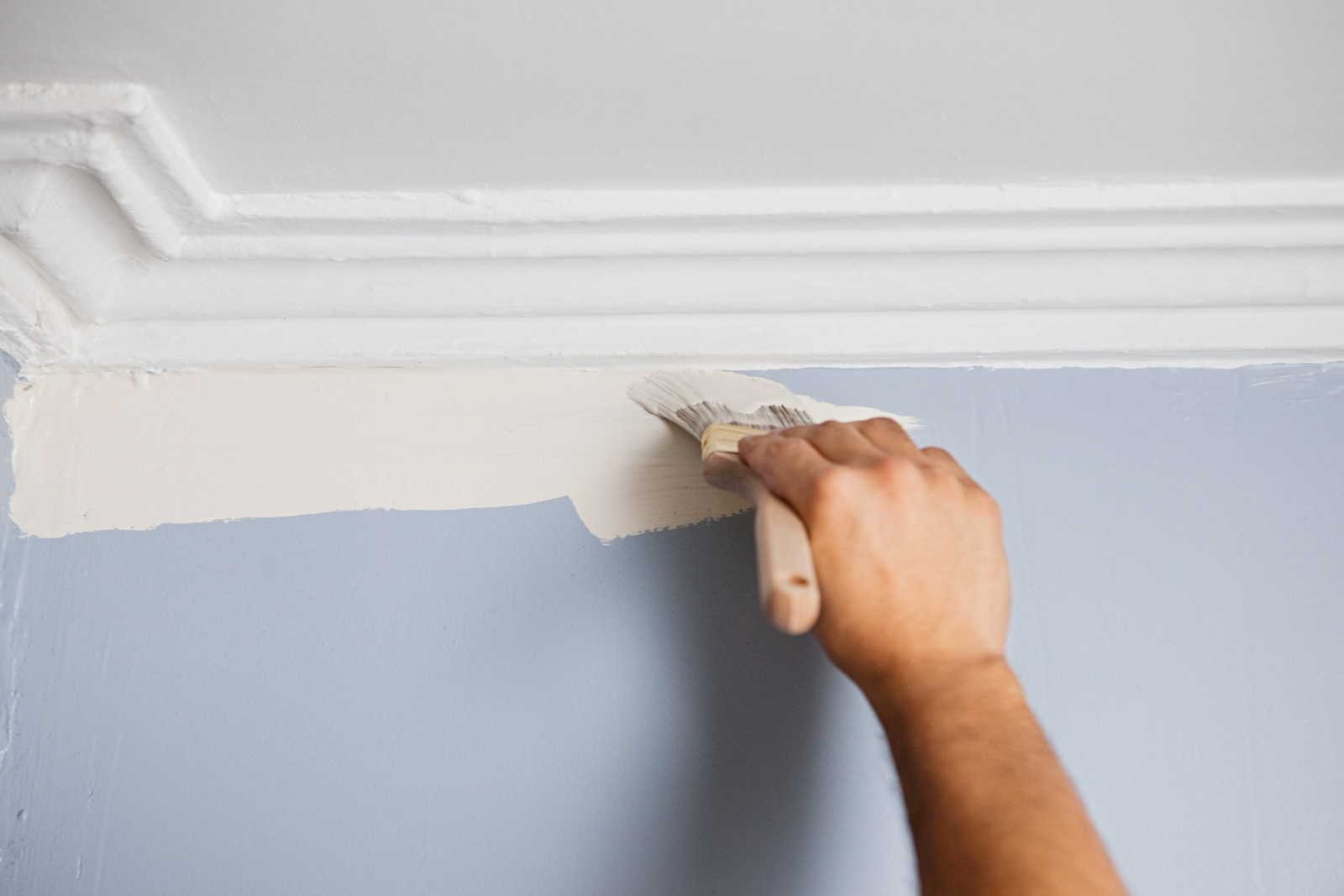
Financing a NYC home renovation can be tricky. There are a few kinds of loans that can help. (Getty Images)
If you’re dreaming of a second bedroom or a chef’s kitchen, you might be wondering how to finance a home renovation in NYC.
With so many different configurations and rules found in NYC residential buildings, figuring out the kind of financing you need for a renovation can be complicated. Here, we’ve chosen three common scenarios and asked a pro to walk us through them.
Debra Shultz is senior vice president of mortgage lending at Guaranteed Rate, and she has more than two decades of Manhattan condo and co-op experience. She’s been nicknamed “AbracaDebra” for helping non-traditional borrowers with out-of-the-box scenarios.
Below, Shultz breaks down the steps involved and the financial requirements for three common NYC renovation scenarios.
Scenario 1: You’re a First-Time Buyer with Limited Cash Looking to Buy a Home and Renovate It
Did you find a great deal on an apartment that could be a dream home after a renovation? Are you a first-time buyer with little cash who needs both a mortgage and a construction loan?
Don’t worry. You’re in the same boat as a lot of people.
“A one-time close construction renovation loan with a lender is your best option,” Shultz tells StreetEasy. “It’s the acquisition loan plus the renovation budget — basically, it’s one loan that includes buying the property and renovating it.”
Manhattan 1-2BRs Under $1M Article continues below
According to Shultz, for the purchase of a primary residence, lenders typically supply 80% of the purchase price plus 100% of the construction budget, not to exceed 80% of the future value once construction is finished.
First, the lender will fund the money you’ll need at the closing, so you can acquire the property. Then, as each phase of the reno project is ready to start, the construction lender will release the cash to fund that phase.
“Payments during construction are interest-only, which is a nice feature for the homeowner,” Shultz says. “They’re able to keep the payment low while waiting out the construction.”
Fannie Mae HomeStyle mortgages are also available in New York City, and they also let you buy and renovate with a single loan. Their renovation product is limited to certain loan amounts and offers up to 97% of the future value.
Unfortunately, if your unit is a co-op, these options are not really available, according to Shultz. In this case, you’ll likely have to purchase the home with a traditional mortgage and fund the renovation yourself with a retirement or unsecured loan, or opt for a home equity line of credit or cash-out refi (which we will explain further in the third scenario).
More on Renovating in NYC
Shultz recommends that clients in this situation put down the minimum amount the co-op requires and use any leftover cash to renovate.
“Some co-op buyers want to put down more than the minimum amount required by the board to keep their monthly mortgage lower,” she says. “But I’d suggest putting down the minimum amount allowed by the board, using their additional funds to renovate, and then refinancing later.”
Scenario 2: You Already Own Your Home and Need Cash for a Renovation
Perhaps you’ve been in your home for a while, have some equity, and simply require funding for a renovation. There are two easy paths forward: Either take out a home equity line of credit — if there’s enough equity in the property — or take out a construction loan.
“[An equity line of credit] puts the homeowner in control of the fund disbursement,” Shultz says. “Closing costs are typically low to none, and they pay interest based only on the amount they draw — lower in the beginning, higher toward the end of the project.
“Once they’re finished, [the borrowers] either leave the line in place and pay it down at their leisure, or refinance and incorporate it into a new first mortgage. Lines of credit are based on the prime rate, which is a monthly adjustable.”
At publication, the prime rate was 5.25%, with some loans available as low as prime minus .5% and as high as prime plus 4%. The interest rate will depend on the borrowers’ credit score, loan-to-value ratio, line amount, etc.
“If the borrowers don’t have enough equity using the current value and need to use the future value, they would need a true construction/renovation loan, like the first scenario,” Shultz says.
The second-best option is a true construction loan — the same loan used to build a new home from the ground up, or to renovate an existing structure. “The owner can borrow enough to pay off the existing mortgage, plus 100% of the construction budget up to 80% of future value,” Shultz says.
Unfortunately, if you’re in a co-op, a traditional construction loan is not available, according to Shultz. Some banks may still offer a home equity line of credit, but it’s subject to the co-op board’s approval.
“Co-ops have strict rules on financing, especially when it comes to the loan to value and debt-to-income ratio,” said Shultz. “So, if someone owns a co-op worth $1 million, owes $500,000, and the co-op allows 80% financing, then taking out a home equity line of credit to fund the renovations can work.
“But if someone owes $800,000, a co-op won’t allow it. They’ve already financed the maximum amount allowed in their building. The amount they can borrow is limited by the board.”
What’s the solution if a home equity line of credit is not available and you don’t have the cash?
“Use non-traditional methods, such as a retirement loan, another unsecured loan, or a cash-out refinance on another property you own” Shultz says. “The board of a co-op has no say over unsecured loans and loans on other properties. Board approval would not be required.”
Scenario 3: You’re a Buyer Planning to Take Cash from Suboptimal Places to Fund a Reno
Perhaps you’re thinking of buying a place you can barely afford, then taking cash from less desirable places — such as your retirement accounts — to cover the cost of the renovation. Then, when the reno is done, you can refinance the place or take out a line of equity to put that cash back.
We know that’s a lot to wrap your head around. But it can be a good option.
Brooklyn 2-3BRs Under $1M Article continues below
“This is actually pretty easy,” says Shultz. “An owner should do a cash-out refi based on the post-renovation value.”
You borrow from your retirement fund or other suboptimal places to pay for a renovation. When it’s done, you refinance the house based on its new, higher value. Then you take the cash difference between the new value and what you owe on the first mortgage and put the money back where you got it.
You can also roll the bulk of the closing costs into the loan amount.
Again, those in a co-op will have to deal with strict financing regulations. Cash-out refinancing could be possible, depending on the board’s restrictions. If not, then you could take out a retirement loan or an unsecured loan.
“If you take a retirement loan, you’d just make monthly payments pre-tax until you’ve paid it off,” says Shultz. “If you take an unsecured loan, you’ll just make monthly payments until it’s paid off. You just can’t roll the balance into a new first mortgage.”
For example, let’s say a client owns a co-op worth $1 million, owes $800,000 on their current mortgage, the co-op doesn’t allow more than 80% financing, and they need $150,000 to renovate. “They can take an unsecured loan from SoFi for $100,000 and a $50,000 401(k) loan,” said Shultz. “They now have three monthly payments: two post-tax, one pre-tax. The 401(k) and SoFi will just stay intact until they’re paid off.”
As you can probably tell, there are many different ways to finance a renovation, so consult a mortgage banker or broker for what best suits your renovation scenario. Their expert advice can prevent you from upsetting any uptight co-op boards, and help make your project the most cost-effective and wisest investment.
—
Inspired to find your next place in New York? Whether you’re looking to rent or to buy, search NYC apartments on StreetEasy.

